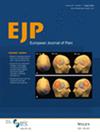Personalised Breakthrough Pain Goals and Responses in Advanced Cancer Patients
Abstract
Background
The aim of this study was to evaluate patients' global impression (PGI), patient pain goal (PPG), achievement of a patient pain goal response (PPGR) among individuals with advanced cancer admitted to an acute palliative care unit (APCU), after a BTP medication.
Methods
Longitudinal design was employed to assess 230 patients. Changes in BTP, PGI, PPG and PPGR were measured.
Results
BTP intensity (mean, SD) before administration of a BTP medication (T0), 15 min after (T15) and 30 min after (T30) was 6.5 (1.63), 4.3 (1.5) and 2.3 (1.5), respectively. The mean PPG was 1.61 (SD 1.6). Almost all patients reported an improvement in PGI. There were no differences between the different opioids used as BTP medication, and PGGR and PGI (p = 0.728 and p = 0.442, respectively). In the multivariate analysis, higher pain intensity at T0 and lower pain intensity at T30 were independently related to PGI (p < 0.0005). The number of patients who achieved their goals increased at T30 (46.1%); 90.8% of patients reported an improvement in PGI; PPGR was correlated with PPG both at T15 and T30 (p < 0.0005) and was inversely correlated with pain intensity at T15′ (p = 0.001) and T30′ (p < 0.0005).
Conclusion
PPG enables clinicians to individualise patient care and facilitates the assessment of pain response within the same patient over time, ensuring that the evaluation is both clinically relevant and meaningful. Together, the PPG, PGI and PPGR serve as important patient-centred metrics which support pain assessment and inform clinical decision-making in alignment with patients' expectations.
Significance Statement
Patient expectations, expressed as pain goals, are hard to be achieved. Nevertheless, global impression after a breakthrough medication is good, regardless the opioid used.

 求助内容:
求助内容: 应助结果提醒方式:
应助结果提醒方式:


